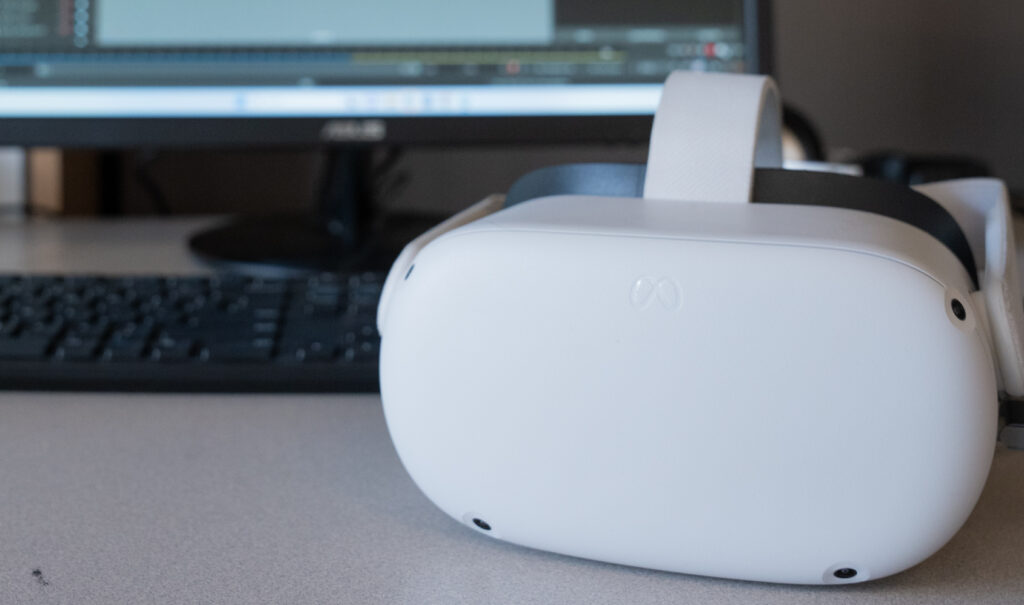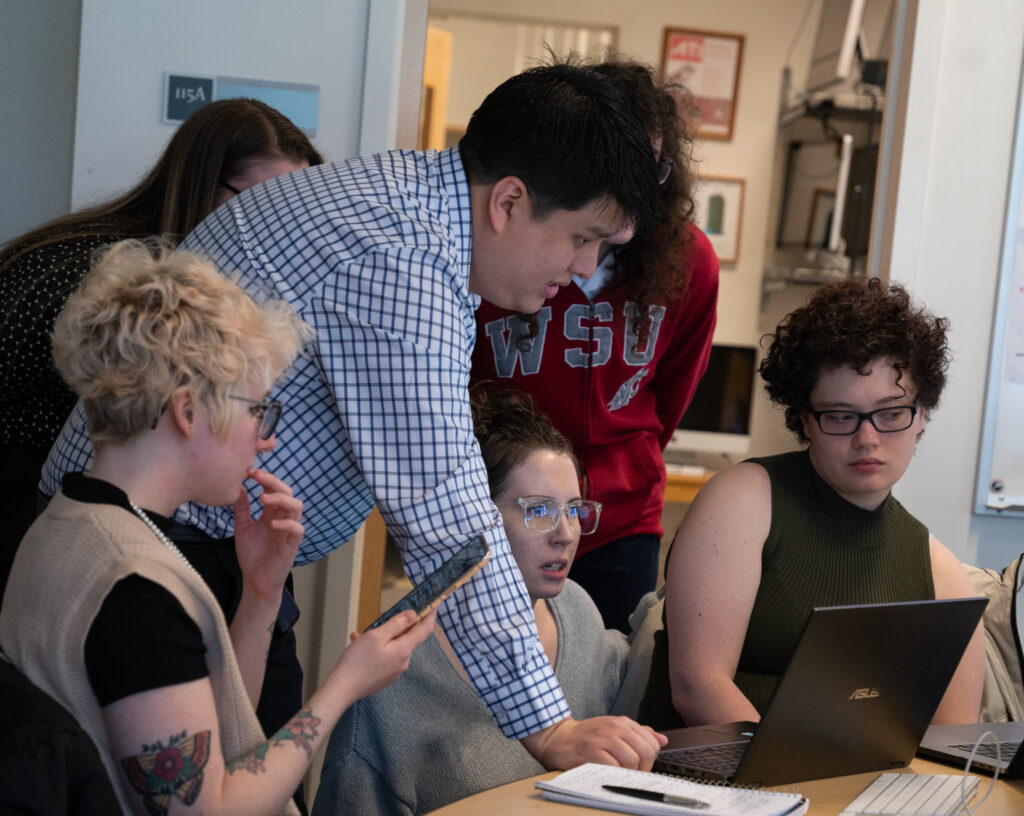This story was originally published in Vol. 33, Issue 9 (May 2023)
This year’s Senior Seminar by the Digital Technology and Culture (DTC) department undertook the challenge of recreating Portal, a video game and interactive novel written by Rob Swigart. Not to be confused with Valve Corporation’s 2007 game by the same name, Swigart’s Portal was originally released on computer disks for the Commodore 64, Apple II, and IBM PC in 1986.
The original Portal novel is a first-person narrative about a traveler returning to Earth after a 100-year voyage. The traveler discovers an abandoned world, and eventually finds a terminal in some old ruins with an AI named Homer. Through further research into the database, the traveler gradually pieces together a substantial sci-fi story of what happened in their absence.
To avoid copyright issues with Valve Corporation’s game, the Senior Seminar students decided to name their version DATA ENTRY: PORTAL, reflecting the primary objectives of the game. By revamping the game into a Virtual Reality (VR) experience, the senior seminar team seeks to capture the same sense of awe and mystery present in the original as well as satisfy the expectations of the source material’s author and client for this project, Swigart himself. Doing this required a lengthy process comprising three phases.

The first and longest phase was pre-development where most of the project plan was put together. Lorraine La Marr, the game’s project manager, oversaw and delegated tasks for the five teams that worked to create this game.
“We identify the workflow of the project by going through all of the details, the specifics, and the timelines of what the deliverables are and at what phases they should be delivered,” said La Marr. “We then bring the plan to our client and collaborate with him to make any revisions he’s seeking.”
In fact, this phase also included research that began before the semester even started.
“Before we even had class start, they were already meeting in their teams,” said Dene Grigar, Senior Seminar instructor and director of the Digital Technology and Culture Department. “Some were already reading the novel and the week before school started, the team leaders had a gathering at my house and played the game together. They met the client who flew in from California and had a chance to talk to them about his vision and what he was trying to achieve with his game, his novel and met with how to articulate that throughout the phases by using a game design [document].”
This game design document includes what game mechanics and features will be included. With VR, the team had to think about how to implement their ideas in a three-dimensional space as opposed to two-dimensional.
Once the game design document was approved by the client, production began with the next phase, which encompassed creating digital assets, website building, and mapping out the game. The team created the concepts for the game including artwork for what future 3D models would look like, a book cover for the original story, and more throughout the process of creating the game. Jianys Berrios, the Multimedia Design Team Lead, oversaw the assets created for her team.
“It’s hard to picture what the world will look like 600 years from now,” said Berrios. “For this story specifically, we looked at the original story which was only set 100 years in the future and we took ideas from that. In the story that means the air is clean and there’s no pollution. So for our game, we envision a world where our world is overrun by greenery and animals are running freely throughout the environment without humans. We took a lot of inspiration from the old book, but also sci-fi movies like Planet of the Apes.”
The next phase was models and environment. Within the game development team is Jose Piñerua — as the sole 3D modeling and animation student, he created and sourced the models and assets that players will see and interact with inside the game.
“It’s interesting to see a model you’ve finished and boot into the engine,” said Piñerua. “You can use it in the game, it feels good. I’ve used nearly every possible resource — Blender, Maya, Unreal Engine, nearly everything inside the Adobe Suite, and even more. I would say to look for resources anywhere you can, and if you don’t know how to do something, look for tutorials.”
The other members of the game development team are Anthony Mondragon, Andrew Hansen, Logan Reed, and Cody Armstrong.

“We work on building various aspects of creating levels within the game, so for example, I’m currently working on two puzzles — a music puzzle and planet puzzle,” said Armstrong. “I’m trying to do the build out of the puzzle while also working on the back-end of the game. I’ve never worked with Unreal Engine until this project before, so that is a major learning curve for me but you’ve got to use your resources.”
Another example of how the team works is how they plan how assets move and act within the environment by creating blueprints and later refining their experiments within the game engine.
“Within this VR environment, the gameplay loop consists of interacting with something the team calls ‘hard light’ which are holographic images, environments or objects that the player can interact with to progress throughout the game,” said Grigar.
DATA ENTRY: PORTAL will be a narrative-driven, Puzzle-Adventure-Mystery game that allows you to venture from space to the Earth 600 years from now, and explore more unique environments solely exclusive to this universe. It is built in Unreal Engine 5 and is the senior seminar’s first VR game. The game is set to be released to the public at https://dtc-wsuv.org/projects/data-entry-portal/index.html on May 3.

Sean is a junior studying digital technology & culture at WSU Vancouver.
